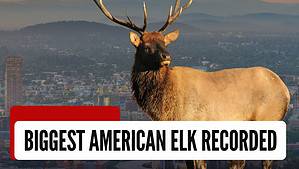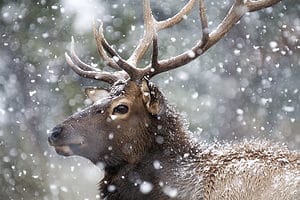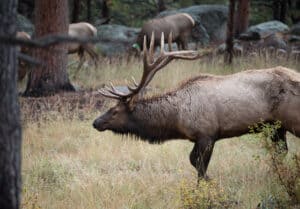As human populations encroach on animal habitats, the situation that arose in this clip is increasingly likely to happen. A herd of 60 elk charging on and near the I-80 highway near Salt Lake City, Utah. A team took three hours to try to push them back into Parleys Canyon and to safety. This took place in January 2023 and it is thought to be connected with the heavy snowfall in the area.
There was not enough grazing for the animals in their usual habitat so they went searching for more. Thankfully, no humans or elk were injured and the herd was successfully moved back to the canyon. Click below to watch the full video of this amazing sight!
Check Out the Video by Clicking Below!
Identifying Rocky Mountain Elk
Elk are a native species of Asia, Eurasia, and North America. They live in mountain meadows, forests, and on the edges of forests. They are the second largest wild herbivore (after the moose) in North America. There are several subspecies and there are even several different kinds of North American elk! Utah is home to the Rocky Mountain elk – Cervus elaphus nelson. This elk has been the official state animal of Utah since 1971.
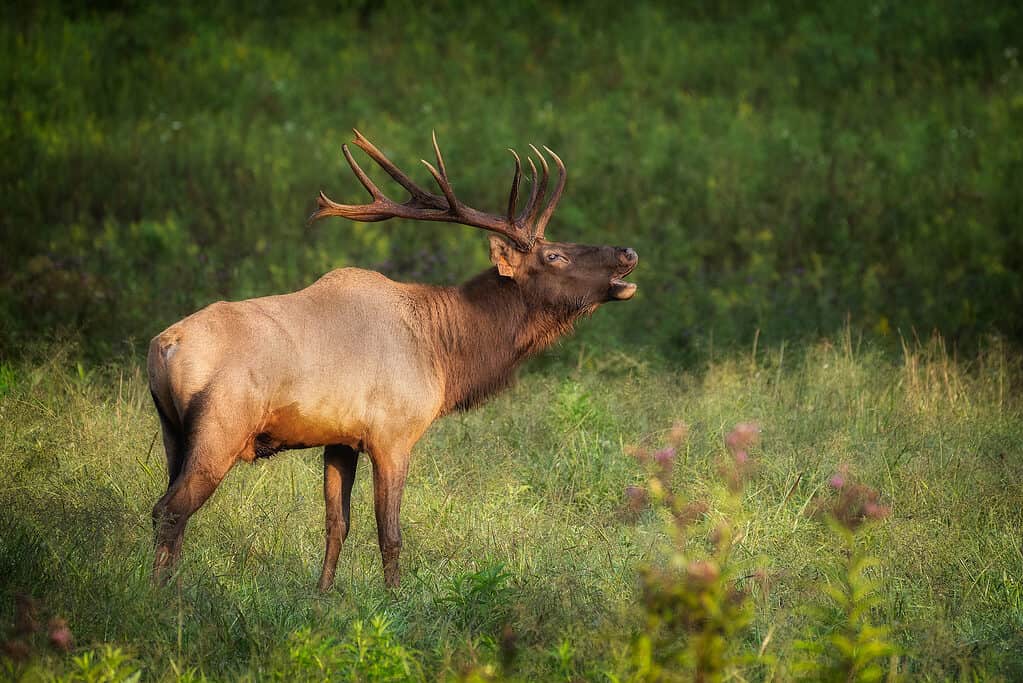
Rocky Mountain elk migrate to find vegetation
©iStock.com/MattCuda
These are large creatures – a bull can reach 500 pounds. The coat is light brown on the body, with a dark brown head, neck, and legs. They also have a characteristic cream-colored rump. Only the bulls have antlers which usually have six points, called tines, on each side. They are shed and regrown every year.
Where Do Rocky Mountain Elks Usually Live?
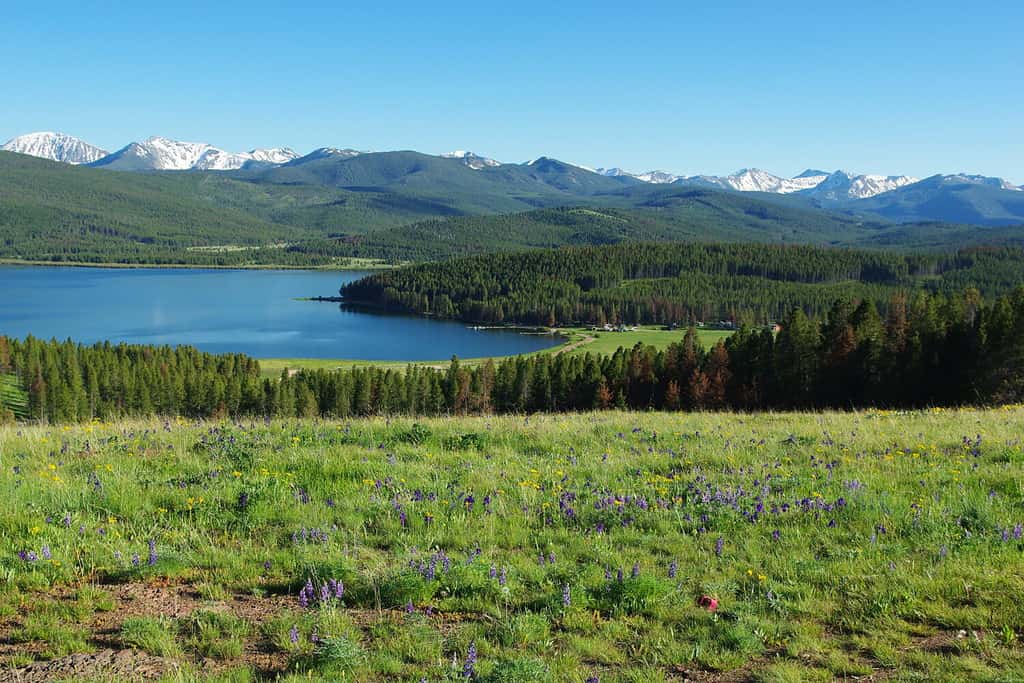
Rocky Mountain elk are found in the mountainous regions of Utah, where they inhabit diverse habitats.
©Claudio Del Luongo/Shutterstock.com
Rocky Mountain elk occupy mountainous habitats throughout Utah. They move seasonally to find the best sources of food. As herbivores, they rely on vegetation for their nutrition. During the summer, they live quite high in the mountains, between 6,000 and 10,000 feet. Herds will often be spotted in and around aspen forests that provide both food and shelter.
They migrate to the lower mountain slopes in late fall where there is less snowfall and food is more plentiful. They spend winter in the valley bottoms where they prefer to forage on south-facing slopes. Here the sun melts the snow revealing the mountain shrubs and sagebrush and the winds tend to prevent heavy snow accumulation. Hopefully, this herd spent the rest of the winter in a safe location.
The photo featured at the top of this post is © Tom Reichner/Shutterstock.com
Thank you for reading! Have some feedback for us? Contact the AZ Animals editorial team.



